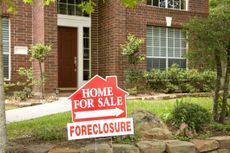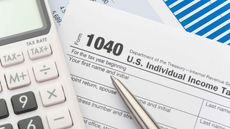5 Reasons to Buy a Home Now
Conditions are nearly perfect to get a super bargain. But don't dally.

If you've been waiting for home prices or interest rates to fall further before you buy a home, it's time to rethink your strategy. If you act soon, you'll be able to take advantage of historically low prices and interest rates that won't be around forever. And if you're a first-time buyer and you act very soon, you can still take advantage of an $8,000 tax credit. Here are five reasons to take the plunge now.
1. You may get a fat tax credit.
The first-time home buyer's tax credit is worth 10% of the home's purchase price, up to a maximum of $8,000. But to lock in the credit, you must close on your purchase by November 30. Given that it usually takes a minimum of 30 to 45 days to get to closing after you and the seller have a ratified purchase contract, your real deadline is closer to October 1.

Sign up for Kiplinger’s Free E-Newsletters
Profit and prosper with the best of expert advice on investing, taxes, retirement, personal finance and more - straight to your e-mail.
Profit and prosper with the best of expert advice - straight to your e-mail.
You don't qualify for the credit if you owned a primary residence in the past three years. And the credit begins to phase out when adjusted gross income is more than $75,000 for single filers, or $150,000 for married couples filing jointly (those with incomes of more than $95,000 and $170,000, respectively, will not receive a credit).
Although several bills before Congress propose to extend or even expand the credit, don't count on it. Legislators are preoccupied with health-care reform and concerned about increasing the federal deficit.
The desire to lock in the credit pushed Ari Weitz, 27, of Atlanta, to buy his first home in August. Weitz began shopping in Inman Park, a vibrant neighborhood in Atlanta's Old Fourth Ward. In April, Weitz found a 1,700-square-foot townhome with three bedrooms and three and a half baths that he really liked. It was listed for $275,000.
His first two offers of $240,000 and $250,000 with $5,000 in seller-paid closing costs didn't fly, but Weitz monitored the status of the property. When he learned in July that the owner was moving out of state and had to sell, he offered $254,000. That offer was accepted, and he got the $5,000 in closing costs, too.
2. Prices are scraping bottom.
It's hard to know whether prices are as low as they'll go, but the housing market is showing signs of life. Between the first and second quarter of 2009, the S&P/Case-Shiller Home Price Indices, a measure of U.S. home prices, rose by 3%. That's the first quarter-over-quarter increase in three years.
Robert Shiller, an economics professor at Yale and a developer of the S&P/Case-Shiller Home Price Indices, says it's too soon to call the uptick a turning point. He says that it may indicate only that the decline in home prices-some 30% since the housing market's peak in mid 2006-is slowing.
The National Association of Realtors (NAR) says homes haven't been this affordable since the 1970s. Based on average income and median home price, a little more than two-thirds of California households could afford to buy an entry-level home during the second quarter of this year, compared with just less than half a year ago.
3. Foreclosures are at record highs.
Distressed sales (foreclosures and short sales) accounted for more than a third of all home-sale transactions in the second quarter of 2009-and represent an opportunity to buy a home at a deep discount.
Such homes typically sell for a 15% to 20% discount from market value. California, Arizona, Florida and Nevada continue to experience the sharpest price declines. Foreclosures will continue to rise with the jobless rate and the last wave of subprime-mortgage delinquencies, despite relief efforts by lenders and the Obama administration.
There are caveats. When REOs (real estate owned by the bank after foreclosure) hit the market, the banks receive multiple offers, often above full price. The banks prefer investors who will pay with cash over "regular" buyers who must seek financing, and they prefer conventional financing over Federal Housing Administration or Department of Veterans Affairs loans.
Buyers think foreclosures are a great deal until they see them in person and realize that often, they need a lot of work. That puts off entry-level buyers who need to save their cash for a down payment or furniture. You're more likely to find a bargain if you work with an agent who handles a lot of foreclosures and gets a heads-up on sales before they hit the market.
Short sales can also be dicey. A short sale means the lender is allowing a home to be sold for less than the mortgage amount. Short sales require patient buyers who can wait out the two to six months typically required to get approval from the bank. Meanwhile, the deal may fall through because the sellers disappear or choose not to cooperate with the process. Or the property could end up in foreclosure because the sellers haven't made their mortgage payments.
4. Rates are cheap.
If there's a silver lining to the recession, it's that interest rates will stay low. That's because investors continue to seek the safety of long-term Treasury bonds, which largely determine mortgage rates. Throughout most of this year, the 30-year fixed rate has hovered near 5%. The 5/1 adjustable-rate mortgage, which has a fixed rate for five years and then converts to a one-year ARM, recently averaged 4.8%.
Keith Gumbinger, who closely follows interest-rate trends as vice-president of financial-publishing firm HSH Associates, expects the 30-year fixed rate to stay around 5.5% for the rest of 2009, absent either a market collapse or economic growth (especially stepped-up hiring). He says that downward and upward forces on rates are canceling each other out right now.
If you can qualify for a mortgage on the home you want at today's rate, holding out for a slightly lower rate is probably a fool's errand. And, if inflation resurges, locking in today's interest rate (and mortgage payment) will look brilliant in hindsight.
To get the best rate, you must put 20% down and have a credit score of 720 or more. Many home buyers have turned to FHA-backed loans, which require a minimum down payment of 3.5% of the purchase price (see Can You Get a Mortgage?).
5. Demand is growing.
In July 2009, existing home sales rose 5% over the year before-the first year-over-year gain since November 2005, according to the NAR. That period also marked an increase in sales over four consecutive months, for the first time since June 2004 (except in the West, where sales fell by 2% between June and July).
The NAR reports that the number of homes for sale fell by 11% from the year before, and at the current pace of sales, that represents a 9.4 months' supply (a four- to six-month supply represents a market balanced between buyers and sellers).
In some areas, competition for deals can be fierce. Atlanta's Debbie Sonenshine, of Coldwell Banker, says that a good house at a good price will get multiple offers and sell quickly. What's a good house? It's clean, it shows well, and it's in a good neighborhood in a good school district.
Get Kiplinger Today newsletter — free
Profit and prosper with the best of Kiplinger's advice on investing, taxes, retirement, personal finance and much more. Delivered daily. Enter your email in the box and click Sign Me Up.

-
 Stock Market Today: Dow Adds 340 Points to End Skid
Stock Market Today: Dow Adds 340 Points to End SkidThe S&P 500 closed the official Santa Claus rally period down 0.5%.
By David Dittman Published
-
 Target Unveils New Gift Card Design to Combat Fraud
Target Unveils New Gift Card Design to Combat FraudWith gift card fraud on the rise, some states are cracking down, requiring retailers to change how they sell gift cards.
By Sean Jackson Published
-
 How to Find Foreclosed Homes: Best Foreclosure Listings Sites
How to Find Foreclosed Homes: Best Foreclosure Listings SitesMaking Your Money Last Find foreclosed homes for sale on these foreclosure listing websites. Search for properties on these free, paid or government sites.
By Bob Niedt Last updated
-
 Luxury Home Prices Rise as the Rich Dodge High Mortgage Rates
Luxury Home Prices Rise as the Rich Dodge High Mortgage RatesLuxury home prices rose 9% to the highest third-quarter level on record, Redfin reports, growing nearly three times faster than non-luxury prices.
By Kathryn Pomroy Published
-
 Four Tips for Renting Out Your Home on Airbnb
Four Tips for Renting Out Your Home on Airbnbreal estate Here's what you should know before listing your home on Airbnb.
By Miriam Cross Published
-
 Five Ways to Shop for a Low Mortgage Rate
Five Ways to Shop for a Low Mortgage RateBecoming a Homeowner Mortgage rates are high this year, but you can still find an affordable loan with these tips.
By Daniel Bortz Last updated
-
 Kiplinger's Tax Map for Middle-Class Families: About Our Methodology
Kiplinger's Tax Map for Middle-Class Families: About Our Methodologystate tax The research behind our judgments.
By David Muhlbaum Published
-
 Looking to Relocate? Plan for Climate Change
Looking to Relocate? Plan for Climate Changebuying a home Extreme weather events are on the rise. If you’re moving, make sure your new home is protected from climate change disasters.
By Rivan V. Stinson Published
-
 Retirees, A Healthy Condo Has a Flush Reserve Fund
Retirees, A Healthy Condo Has a Flush Reserve FundSmart Buying Reserve funds for a third of homeowner and condo associations have insufficient cash, experts say. Here are some cautionary steps you should take.
By Patricia Mertz Esswein Published
-
 Retirees, Make These Midyear Moves to Cut Next Year's Tax Bill
Retirees, Make These Midyear Moves to Cut Next Year's Tax BillTax Breaks Save money next April by making these six hot-as-July tax moves.
By Rocky Mengle Published